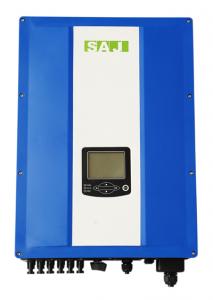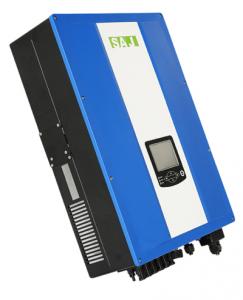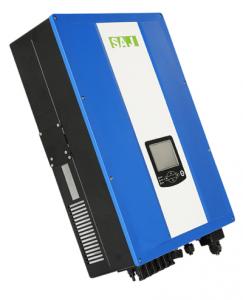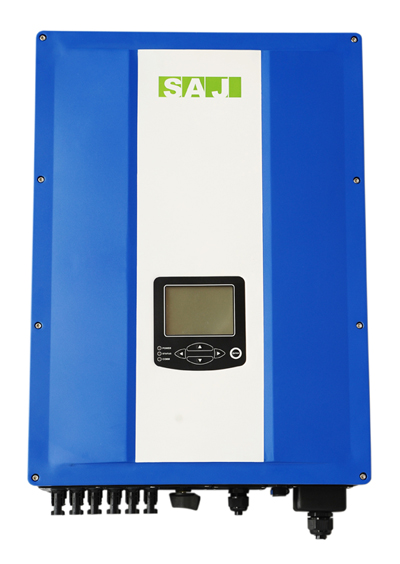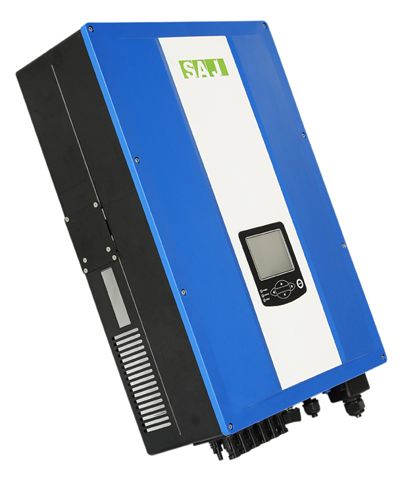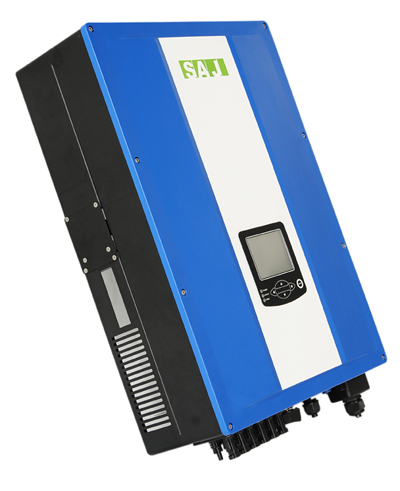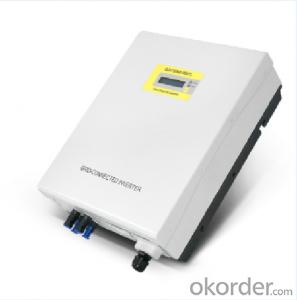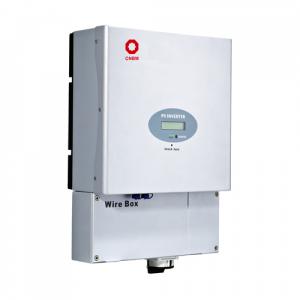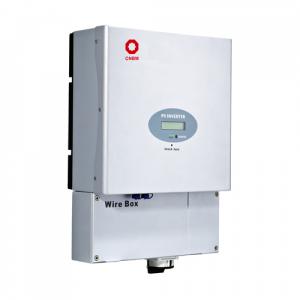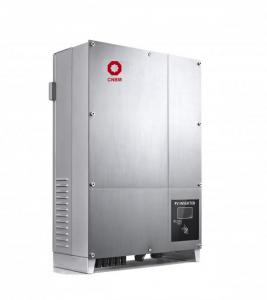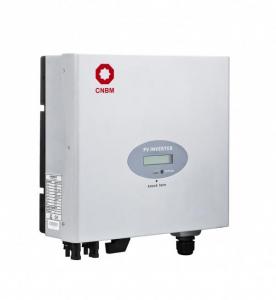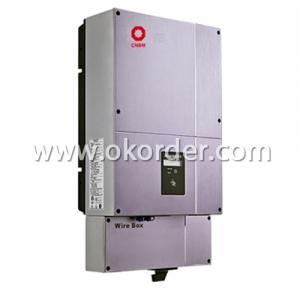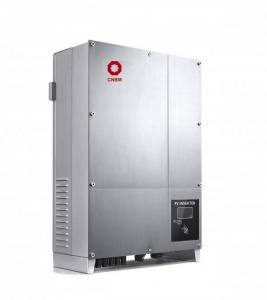Solar Inverter Manufacturers:On Grid Solar Inverter Suntrio-TL15K with 2 MPPT
- Loading Port:
- Guangzhou
- Payment Terms:
- TT OR LC
- Min Order Qty:
- 1 watt
- Supply Capability:
- 3000 watt/month
OKorder Service Pledge
OKorder Financial Service
You Might Also Like
Suntrio-TL12K/15K/17K/20K PV inverters are transformerless inverters with efficiency of up to 98.1%. Multi-MPPT inputs provides higher flexibility for the project installation. Stainless steel housing and IP65 protection guarantee use both indoor and outdoor for long. The series inverters are ideally suited for medium and commercial PV projects of up to MW range.
1. Leading technology
· Max. efficiency 98.1%
• MPPT accuracy up to 99.9% efficiency
• Compliant with VDE-AR-N 4105
2. User-friendly
• 5 inch LCD display with comprehensive information
• Embedded webserver monitoring
• Easy installation
3. Flexible
• Multi-country configuration
• RS485 / Ethernet / Wi-Fi communication
• Wide range of DC input voltage
• IP65 for indoor and outdoor
4. Certificates: TUV,SAA,G83,ISO9001,ISO14001,etc.
Futures
■ Two independent MPPT for flexible configuration.
■ Space Vector PWM to maximize efficiency and minimize EMI.
■ Highest MPPT performance, up to 99.9% efficiency.
■ Transformerless design with 98.1% Max. efficiency.
■ Ethernet/ Wi-Fi communication interface.
■ Integrated Web Server for overall performance monitoring.
■ Compliance with VDE-AR-N 4105 with reactive power control.
■ 5-inch large LCD display.
■ LCD day/month/year/total yield graphs display.
■ Event history lookup
■ Easy operation with 5 navigation buttons.

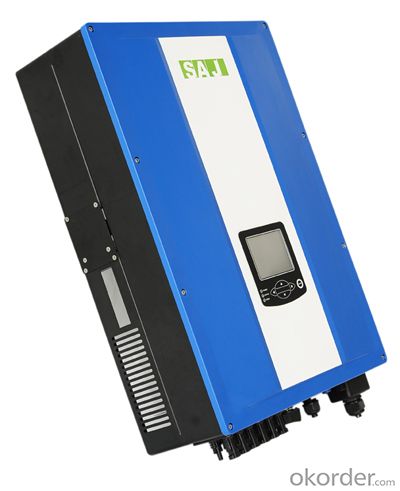
FAQ
1. How long will my inquiry get response?
Your inquiry related to our products or prices will be replied within 24 hours.
2. Can I get professional service and suggestion?
Well-trained and experienced staffs to answer all your questions in fluent English.
3. Do you accept OEM or customized design?
OEM & ODM, any your customized lightings we can help you to design and put into product.
4. What if I need specific design?
Distributorship are offered for your unique design and some our current models.
- Q: What are the different types of solar inverters?
- There are three main types of solar inverters: string inverters, microinverters, and power optimizers.
- Q: What is the role of a bypass switch in a solar inverter?
- The role of a bypass switch in a solar inverter is to provide a backup mechanism that allows the system to switch to the grid power in case of any issues or failures with the solar power generation. This ensures a continuous supply of electricity to the connected loads, even when the solar panels are not generating enough power or are experiencing problems.
- Q: The function of photovoltaic grid - connected inverter
- Finally, a sinusoidal AC output for a grid-connected photovoltaic power generation system is generated by a low-pass filter.
- Q: How does a solar inverter handle fluctuations in solar panel output?
- A solar inverter handles fluctuations in solar panel output by continuously monitoring the voltage and current from the panels. It adjusts the input parameters to maintain a stable output power, compensating for variations in sunlight intensity, temperature changes, and other environmental factors. This ensures a consistent and reliable supply of electricity from the solar panels to the connected electrical load or the grid.
- Q: How does a solar inverter handle ground fault protection?
- A solar inverter handles ground fault protection by continuously monitoring the flow of current between the solar panels and the ground. If it detects any abnormal current leakage, indicating a ground fault, it quickly shuts down the system to prevent any safety hazards or damage to the equipment.
- Q: What is the maximum number of AC outputs in a solar inverter?
- The maximum number of AC outputs in a solar inverter varies depending on the model and design of the inverter. Some solar inverters may have a single AC output, while others can have multiple AC outputs, ranging from two to four or even more.
- Q: How does a solar inverter handle fluctuations in solar panel output due to temperature changes?
- A solar inverter handles fluctuations in solar panel output due to temperature changes by incorporating a maximum power point tracking (MPPT) algorithm. This algorithm continuously adjusts the voltage and current levels to optimize the power output from the solar panels, compensating for any temperature-related variations. By dynamically adapting to temperature changes, the solar inverter ensures that the maximum power is extracted from the panels and efficiently converted into usable electricity.
- Q: What is the maximum power output of a residential solar inverter?
- The maximum power output of a residential solar inverter typically ranges between 1 kW to 10 kW, depending on the size and capacity of the system.
- Q: How does a solar inverter handle voltage unbalance?
- A solar inverter handles voltage unbalance by continuously monitoring the voltage levels of the three phases in the grid. If it detects any imbalance, it adjusts the output voltage accordingly to maintain balance and ensure optimal performance.
- Q: Can a solar inverter be used with a three-phase electrical system?
- Yes, a solar inverter can be used with a three-phase electrical system. In fact, many solar inverters are designed to work with three-phase systems. These inverters are capable of converting the direct current (DC) generated by the solar panels into alternating current (AC) that can be used by the three-phase electrical system.
Send your message to us
Solar Inverter Manufacturers:On Grid Solar Inverter Suntrio-TL15K with 2 MPPT
- Loading Port:
- Guangzhou
- Payment Terms:
- TT OR LC
- Min Order Qty:
- 1 watt
- Supply Capability:
- 3000 watt/month
OKorder Service Pledge
OKorder Financial Service
Similar products
Hot products
Hot Searches
Related keywords
